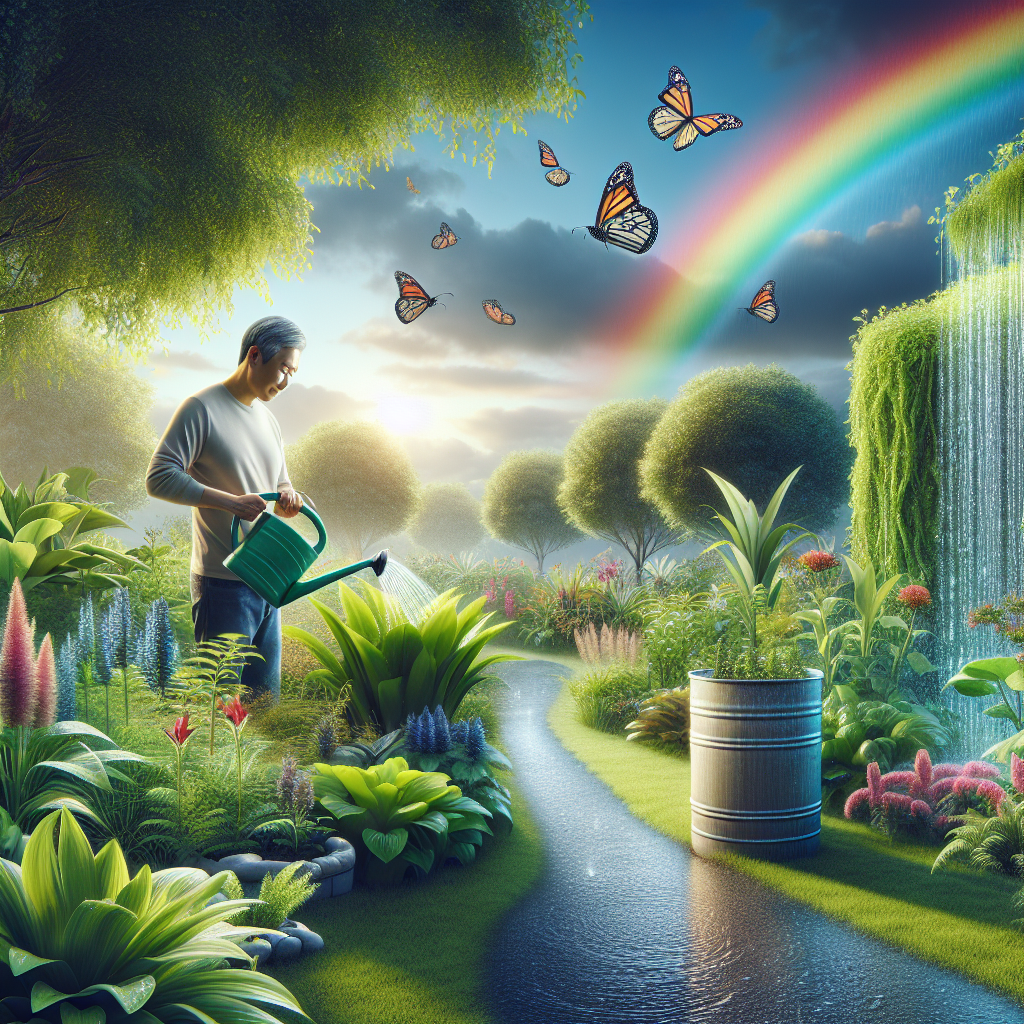Title: Efficient Watering Techniques for Your Garden
Imagine stepping into your backyard oasis, where lush vegetables and vivid blooms thrive vibrantly. Now, what if I told you that this verdant paradise could also be a model of water conservation? As garden enthusiasts seeking both beauty and environmental responsibility, efficient watering techniques are essential.
Understanding the Importance of Efficient Watering
Water is the lifeblood of your garden, but with increasing environmental concerns and utility costs, how you water is as important as when you water. According to the Environmental Protection Agency, an astonishing 30-60% of domestic water is used outdoors, and more than 50% of landscape water use is often wasted due to inefficiency. Efficient watering not only nurtures your plants but also conserves a precious resource and saves money.
Soil Check – The First Step to Efficiency
Before taking out your hose or watering can, check the soil moisture. The mantra here is simple: Only water when necessary. A simple soil moisture tool can help determine whether your plants actually need watering. Alternatively, dig down 2-3 inches into the soil near the roots. If it feels dry, it’s time to water; if it’s damp, wait another day.
The Early Bird Waters Wisely
Timing is critical. Water in the early morning when the cooler temperature lessens evaporation and winds tend to be calmer so water goes where it’s needed. This is backed by a study from Cornell University which highlights that watering in the evening can lead to fungal diseases due to moisture lingering on the foliage overnight.
Drip Irrigation – The Pinnacle of Watering Efficiency
For targeted watering, consider drip irrigation systems which deliver water directly to the base of the plant. This not only reduces water waste by up to 50% compared to conventional methods but also fosters deeper root growth, healthier plants, and mitigates weed growth. Plus, adding a smart controller to your system can further optimize water use.
Mulch – Nature’s Moisture Manager
Mulching isn’t just an aesthetic choice—it’s an efficiency hack. A healthy layer of organic mulch, around two to three inches, insulates the soil, keeping it cooler, minimizing evaporation and reducing the need for frequent watering. As mulch decomposes, it also enriches the soil, another win for your garden. Choose from materials like shredded bark, straw, or even compost.
Rain Barrels – Capture Nature’s Gift
By installing a rain barrel, you collect rainfall that can be used to water your plants. This simple system reduces dependence on municipal supplies and makes good use of a free resource—rain. The setup is usually straightforward, and your plants will thrive on rainwater, which is typically softer and free of chlorine.
Choosing Wisely – The Right Plants for Your Climate
Sustainability starts with plant selection. Opt for native plants or those adapted to your climate. These species naturally require less water and are more resistant to pests and diseases. Research from the University of Georgia Extension underscores the importance of choosing the right plant for the right place for water efficiency.
Watering Cans and Hose-End Sprinklers – The Old-School Approach with a Twist
If you prefer a more hands-on approach with watering cans or hose-end sprinklers, all is not lost when it comes to water efficiency. Today’s products come with features like flow-control valves and precise spout design to reduce waste. When using a sprinkler, make sure to position it to avoid sidewalks and driveways.
Smart Technology for the Smart Gardener
Embrace technology with smart watering devices. Connected systems enable you to control watering schedules from your smartphone. They even adjust based on local weather conditions so you don’t water when it’s raining, and they’re perfect for monitoring vacation watering. Check out options like Rachio Smart Sprinkler Controllers to take the guesswork out of the equation.
Know Your Flow Rate
Knowledge is power, particularly when it comes to water pressure and flow rate. Use a flow meter or time how long it takes to fill a measured container to ensure your watering system is not wasteful.
Revisiting Your Watering Schedule
As seasons change, so do the needs of your garden. Adjust your watering schedule as temperatures fluctuate. Less is more during cooler months, and during the growing season, you might need to water more frequently. Also, be mindful that the needs of your garden will change as your plants mature.
Final Thought
Efficient watering is both art and science. By understanding your garden’s needs and leveraging innovative tools and techniques, you can nurture a thriving garden without wastefulness. Remember, every drop counts, and with each smart watering choice, you are making a positive impact on your environment and your wallet.
In creating a water-efficient garden, the journey is ongoing. Keep learning, exploring, and enjoying the fruits (and vegetables) of your labor. Happy gardening!
For more insightful gardening tips and tricks, remember to subscribe to our mailing list and never miss an update on how to make your garden the envy of the neighborhood.
Note: Please consider checking your local water conservation guidelines, as recommendations and restrictions can vary by region.
SEO: Efficient Watering, Gardening Tips, Water Conservation, Drip Irrigation, Rain Barrels, Smart Gardening

